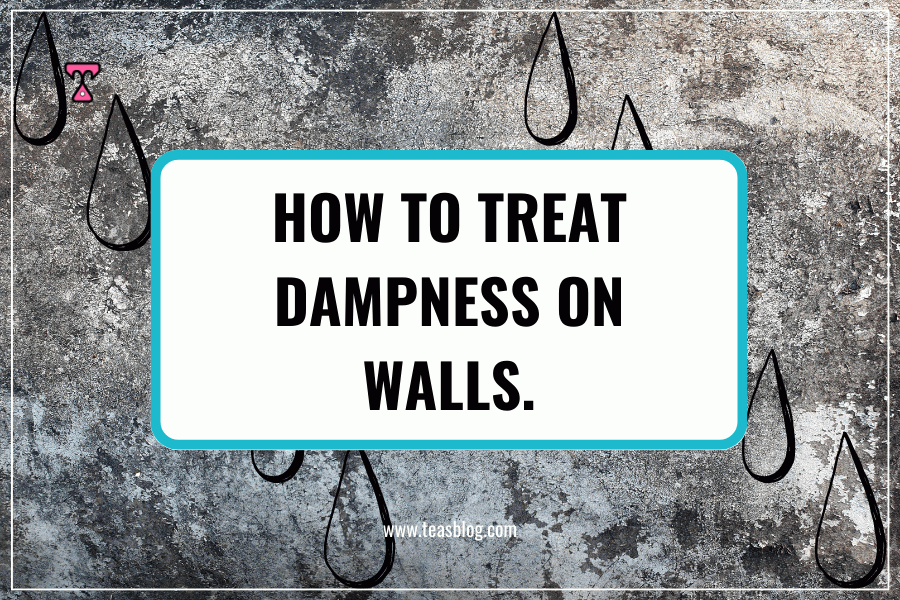How to treat dampness on walls and floors. Dampness is the presence of moisture in a building fabric, through vertical movement of moisture, and internal or external influences.
During my paid employment, I was sent to a family house to take measured drawings of an existing building. I went there with my colleague and a plumber. When we got to the building, we were informed that the bathroom floor drainpipe had broken inside the floor and the concrete was soaking up water. This caused dampness within the interior of the floor below.
They had fixed the broken pipes, but nothing was done for the molds and algae that were growing in the interior of the floor below.
It was another person’s apartment and the tenants with the broken pipe only sort to fix their pipe. The owner of the building had called us to handle the repairs.

We immediately got to work, measuring the spaces that needed repairs. This helped us determine the area and subsequently the quantity and number of materials needed for the repairs.
Related: How to Effectively Read a Floor Plan Like a Pro.
Plumbing pipes can break at any time and the need for maintenance becomes paramount, which is why I always advocate for using ducts for any mechanical fittings instead of burying plumbing pipes in walls. Maintenance is easy and accessible.

Causes of dampness in walls
The dampness in this building was caused by a broken pipe. Here are other reasons that cause dampness.
- Capillary action: This means water coming up through the earth surrounding the foundation walls.
- External forces: This is caused by rainfall or poor drainage around the building.
- Internal forces: This is caused by the high content of moisture within the building.
Treatment/Prevention/Recommendations
The dampness caused by capillary action is usually the hardest to treat as it concerns the foundation, and the concrete floor cannot be raised up to fix the foundation. During initial construction, damp-proofing is usually done before the concrete floor, to prevent water from rising up from the earth into the walls.
However, steps can be taken to control the effects it has on the building and elongate the building material lifespan. The steps to be taken will be unique to each building depending on the severity.
On the internal surface, start by scraping off old paints, molds, and growth on the walls and floors. Ensure the surfaces are clean from any dusty film. Apply a waterproof finish (I recommend the Bostik Cementech C1 Duo paint). When dry, you can re-apply your paint on the wall or any other interior finish you wish to use.

- Bostik Cementech C1 Duo_©https://www.bostik.com/egypt/en/product-finder/product/construction/emea/egypt/product-bostik-CemenTech-X/
If you are in Nigeria, you can contact them here. They are located in Abuja, Nigeria.
For dampness caused by rainfall, use the same waterproof finish and correct the surface run-off around your building. This can be done by directing drainages and gutters away from the building.
Also Read: Architecture Design Fees: How It’s Calculated.
For dampness caused by internal forces owing to the high moisture content in the air, install extractor fans to remove water vapour. Air the spaces by opening up windows. Avoid using PVC ceiling material in air-conditioned spaces.
PVC material is plastic, when the sun shines on the roof and hot air is trapped within the roof cavity and you turn on your AC, the cold air within your space is touching the ceiling, while the hot air in the roof cavity is touching the PVC ceiling from the opposite side, you will see water droplets on your PVC ceiling. This shows that condensation is occurring in your space resulting in dampness.
These measures are to help prevent further deterioration in your building.
The best ways to prevent dealing with these measures is to have your building constructed by professionals who understand damp-proofing principles and imbibe good maintenance culture (learn to fix things immediately instead of waiting until there is not much that can be done to remedy a situation).
Back to my story…
Unfortunately, I was unable to go back to the building during the repairs and completed work.









